Two sisters, daughters of the parson of a small municipality, lead their quiet lives in the north-west of Iceland. Þuríður (Tinna Gunnlaugsdóttir), the eldest, is a woman in her forties. She is married to a well-off man from the Capital and her main concern is to lead a showy but honorable life. She is a control freak holding power over her entire household. Rannveig (Ragnhildur Gísladóttir), the youngest, is the exact opposite in everything, from physical appearance to outlook on life: she has no interest in marriage or possessions; she is rather into making it on her own. Thanks to her almost saintly kindness, she is a favorite of the local country folks.
Worried about her future after she turns down the umpteenth suitor, Rannveig’s family sends her abroad to Copenhagen to study, in the hope this can make her come to senses. Here the young woman meets her sister’s former lover, a middle-aged actor with an invisible wife and the carefree attitude of the tombeur de femmes. From this point on Rannveig’s life—and her family’s as well—is upset forever.
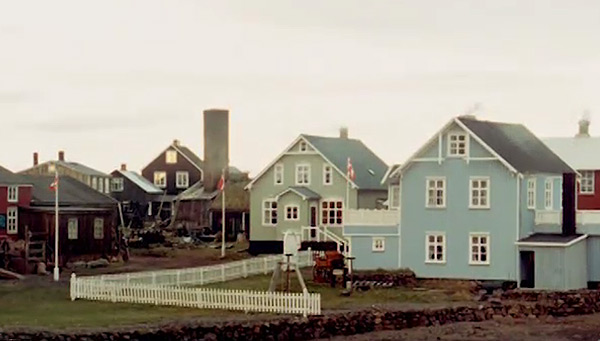
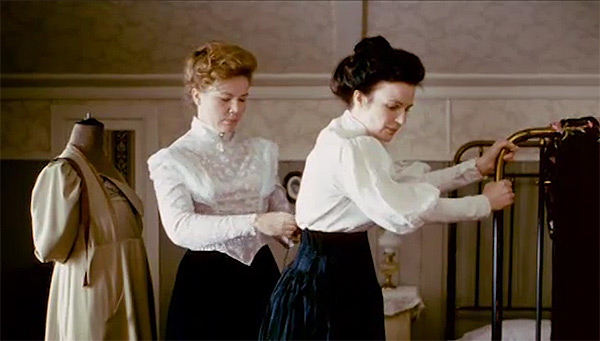
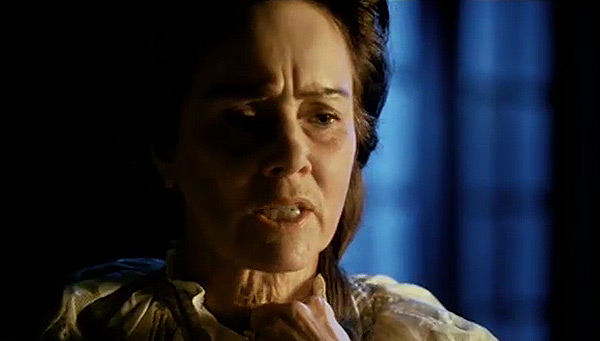
Ungfrúin góða og húsið is based on a short story bearing the same title by Halldór Laxness that was originally published in 1933. It was filmed mainly on location in Flatey, Breiðafjörður and in Vogar during the winter of 1998—that is, shortly after Halldór Laxness’ death. The filmmaker Guðný Halldórsdóttir, the youngest daughter of the writer, had previously directed another film based on a work by her father, Kristnihald undir Jökli (Christianity at the Glacier also known simply as Under the Glacier, 1989), from the novel written in 1968.
The written material on which the film is based is multi-layered and complex. There are themes in The Honor of the House that are clearly Halldór Laxness’ very own as: the manifest sympathy for the outcast and the weak (women, children, working classes, old folks, and so on); the role of deception and trickery in society; the relationship with then-ruling country Denmark; the subtle commentary on the changes in Icelandic culture and customs.
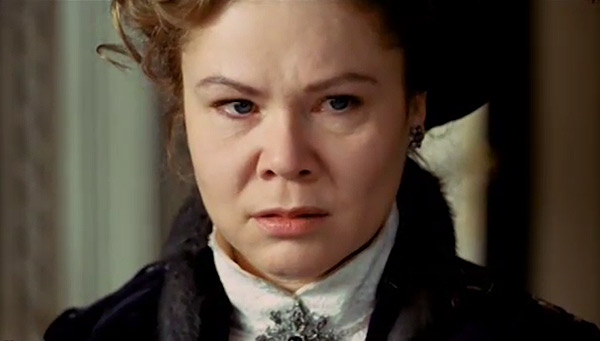
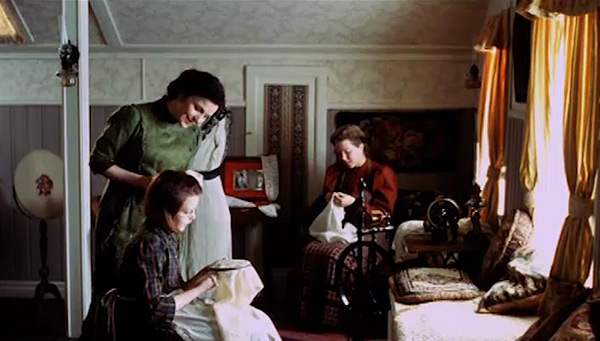
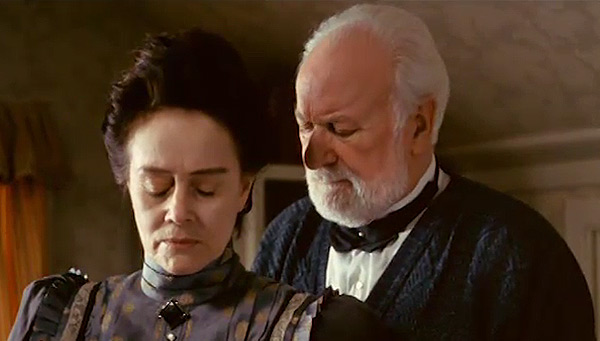
The cinematography is above all what makes the film worth watching. Especially the sequences shot in interiors are a delightful display of contrasting colors and moods: the warm tones with vibrant reds and blues of the Kodak Vision 35mm film stock feel so alive at times that they are almost capable of telling a story of their own. The acting is yet another. Even if the whole cast offers a believable portrayal, the star of The Honor of the House is without a doubt Tinna Gunnlaugsdóttir as Þuríður—no wonder for her performance she won the Edda Award in 1999 as Actress of the Year.
Even with all these good qualities, I feel there is something amiss in Guðný’s work. Overall, the film has a TV production patina that makes it hard to digest. The language is functional but often excessively subdued and never memorable or outstanding. The score by Hilmar Örn Hilmarsson, however brilliant, is definitely overused with a somewhat cheapening effect: it pops in at times when silence would suit the images better, so that it often feels redundant and out of context. A few minor details about the decor and costumes look a little anachronistic and not properly researched, too.
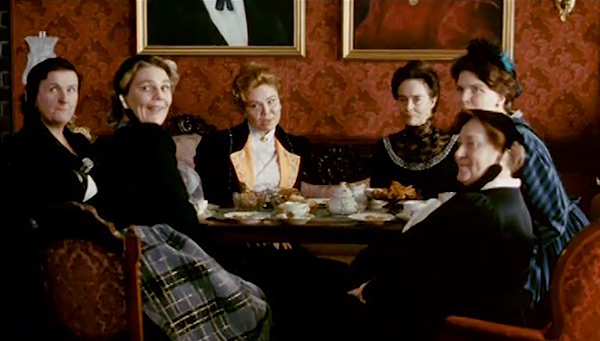
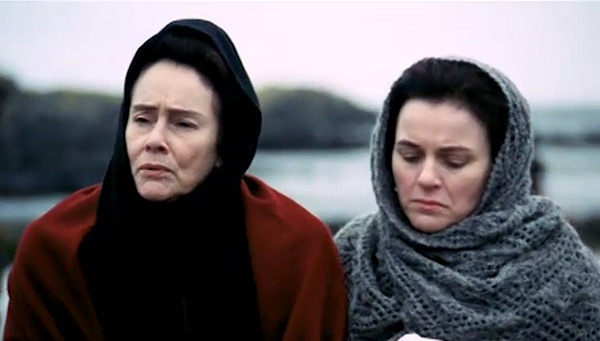
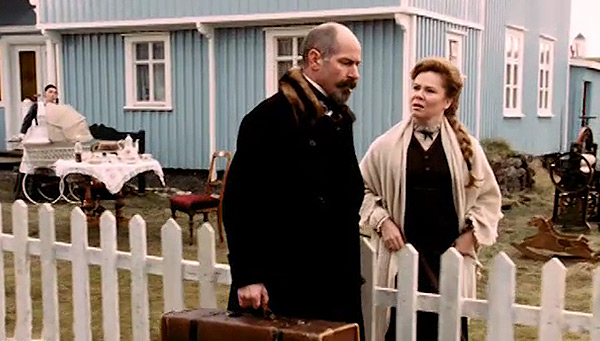
Most of the story is narrated in retrospect through the monologue-recollection of Rannveig and Þuríður’s mother. Nevertheless, we do not identify with the old woman’s point of view, but rather with that of her daughters.
However delirious her concerns may appear, especially by today’s standards, it’s with Þuríður that we end relating the most: it’s mainly through her eyes that we get to know the world where the film takes place. The older sister’s plots, even when intricate, are fully exposed for the viewer to judge. On the other hand, Rannveig’s motivations, even if obviously closer to our “modern” sentiment and thus more acceptable, are not explored in depth, so that her personality remains largely unknown. Whereas Þuríður’s cravings are clearly legible and her intentions are coherent with a certain antiquated and bigot sensibility, Rannveig’s appear inconsistent and even erratic at times. If anything, they are founded on the vague, though perfectly legitimate, desire to achieve personal independence as a woman. Rannveig’s desire though is never strong enough for her to contrast openly the social rules binding her aspirations. As spectators, we are left wondering about her character most of the times.
The film—and the story behind it—doesn’t seem to offer a clear-cut interpretation of Iceland’s society and its mechanics. The sisters’ conflict gives a fine representation of the clash and the many contradictions between old and new Iceland, each trying to assert itself by pushing a boundary at the expenses of the other. As far as we can see though, old and new are both flawed and unable to survive on their own, so to an extent they can and must coexist. Þuríður and Rannveig are reconciled by the ending, but neither of them seems to offer an all-around balanced and convincing answer to the questions the film raises. Þuríður is the embodiment of the hypocrisy of upper classes, preoccupied with salvaging a fake appearance of respectability before anything else, even if this means destroying the happiness and the well-being of a loved one. Irony is that eventually she is the one to bring unhappiness in her family, not Rannveig with her outrageous mingling with outcasts, idiots and working classes—with modernity, in a word. In a way, the two sisters come to terms after their roles are finally reversed: Þuríður is swept away by a blazing passion and the subsequent scandal, while Rannveig devotes herself to a quiet life of resignation and docility. As the once estranged sisters embrace to grieve at the end, we are only told that Iceland’s dual spirit is destined to live on.
You can watch Ungfrúin góða og húsið via Icelandic Cinema Online.
For me , the great problem with this kind of adaptations is how not to become a mere and functional servant of the original text, how to insuflate a personal vision of the world in something that is not of our own , even if you are the daughter of the writer. In a word, trying not to become only illustrative, like in the films of James Ivory.Sometimes the approach of the filmmakers to certain texts is full of reverence and ,sometimes, even fear, fear to the disappointment of the readers of the original text, fear to not make honour to the purposes of the author. Too much responsability, I think. The resolutions of all that is almost always the same: cold correction and , maybe ,a good photography an some decent performances of the cast. But thats not enough, at least for me. I need the talent of directors like Andrea Arnold, people able to offer new and above all contemporary visions of classics books , like she does in her recent version of ” Wuthering heights”, a book with a great and suffocating tradition of adaptations.
I wholly agree with you. In fact, I wrote more or less the same, even if I worded it differently =) Adaptations of books that are not illustrations, as you correctly state, are very few. This doesn’t mean that films illustrating books cannot do a good job; simply they do not go very far in terms of imagination and the filmmaker’s personal outlook becomes irrelevant. The style is also more about costumes, set decor and memorable lines that will ring true or that will translate well than about creatively visualizing the content. Probably this “gutless” approach is not only the filmmaker’s fault, but it’s also a question of meeting the reader’s expectations. In the case of historical material like with Laxness’ story, it’s also that films like this cost a lot of money so it’s probably risky to turn them into something the audience won’t receive well. I’m not very much into films from books or even biopics for this reason. For the same reason, I often find interesting Japanese adaptations of western books: as the Japanese have a very different sensibility from ours, it’s refreshing to see how filmmakers from Japan give books written by authors from the western countries original and surprising interpretations.
This is one of the few translated work of Laxness’ that I haven’t read. Maybe I’ll watch the movie first this time. Thanks for the review.